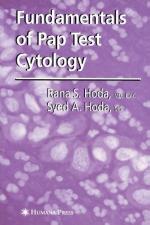|
This section contains 293 words (approx. 1 page at 300 words per page) |
The Pap test is a simple and painless procedure for the early detection of the two most common and fatal forms of cancer in women: cervical and uterine. It is considered one of the most effective and significant weapons in the modern fight against cancer.
The test, also known as Papanicolaou's Smear, is named for the Greek doctor who developed it, George Nicholas Papanicolaou (1883-1962), who received his M.D. from the University of Athens in 1904. He emigrated to the United States in 1913 and was affiliated with New York Hospital and Cornell Medical College throughout his career. In 1917, Papanicolaou began a microscopic study of vaginal discharge cells in pigs. After expanding his research to humans, he observed cell abnormalities in a woman with cervical cancer, which inspired him to develop a method of detecting cancer through microscopic cell examination, or cytology. This technique had first been suggested by English physician Lionel Smith Beale (1828-1906) in 1867. Papanicolaou began publishing reports on his cytologic method of uterine and cervical cancer detection in 1928, but most of his colleagues remained committed to the standard procedures of cervical biopsy and curettage. In 1939 Papanicolaou began collaborating with gynecologist Herbert Traut. Their 1943 monograph, Diagnosis of Uterine Cancer by the Vaginal Smear, won wide acceptance for the procedure, and Papanicolaou began teaching it to physicians from around the world.
The significance of the Pap smear is that it allows detection of cancer in its presymptomatic stage, when the disease can best be treated. Cancer of the cervix in its earliest stages is almost 100% curable, while 80% of uterine cancer cases detected by a Pap test can also be cured. The smear technique of abnormal cell detection has been expanded to early diagnosis of cancer of many other organs.
|
This section contains 293 words (approx. 1 page at 300 words per page) |


